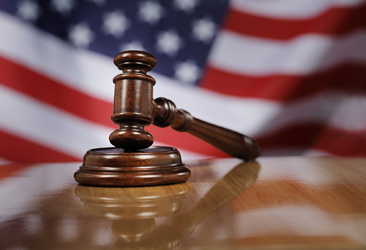
U.S. SUPREME COURT REVERSES DAMAGE AWARD IN SAMSUNG v APPLE
The Supreme Court on December 6, 2016 ruled that when considering the basis for awarding damages based on the infringer’s profits from infringing a design patent, it is not necessary to base these damages on the profit made on the entire article sold by the infringer, but that it can be based on a component of that article as long as that component is itself an “article of manufacture.”
Samsung was found to have infringed design patents owned by Apple that claimed certain features of smart phones by showing these features in solid lines with the rest of the phone being shown in broken lines. The question before the Court was how to calculate damages in this situation. The Court of Appeals for the Federal Circuit had based them on the entire profit made by Samsung on the phones in question.
35 U.S.C. § 289 reads:
- Whoever during the term of a patent for a design, without license of the owner, (1) applies the patented design, or any colorable imitation thereof, to any article of manufacture for the purpose of sale, or (2) sells or exposes for sale any article of manufacture to which such design or colorable imitation has been applied shall be liable to the owner to the extent of his total profit, but not less than $250.
The issue before the Supreme Court was on what article should the “total profit” be based when the claim was in effect only for part of an article.
Justice Sotomayor writing for a unanimous Court put the question as follows:
- Arriving at a damages award under §289 thus involves two steps. First, identify the “article of manufacture” to which the infringed design has been applied. Second, calculate the infringer’s total profit made on that article of manufacture.
- This case requires us to address a threshold matter: the scope of the term “article of manufacture.” The only question we resolve today is whether, in the case of a multi-component product, the relevant “article of manufacture” must always be the end product sold to the consumer or whether it can also be a component of that product. Under the former interpretation, a patent holder will always be entitled to the infringer’s total profit from the end product. Under the latter interpretation, a patent holder will sometimes be entitled to the infringer’s total profit from a component of the end product.
The Federal Circuit had adopted the former interpretation. The Supreme Court adopted the latter interpretation. After referring to some dictionaries, the Supreme Court noted that “an article of manufacture” is “simply a thing made by hand or machine” and therefore
- That a component may be integrated into a larger product, in other words, does not put it outside the category of articles of manufacture.
Therefore the Supreme Court found that the Federal Circuit’s interpretation of the term “article of manufacture” was wrong. Justice Sotomayor, however declined to address the question of what the term actually meant in a situation such as the present. (Samsung had previously argued that the term should have been construed to mean the screen or case of a smart phone – but the Federal Circuit had rejected this approach on the basis that these components were not sold separately.) In declining to address this issue Justice Sotomayor noted:
- The parties ask us to go further and resolve whether, for each of the design patents at issue here, the relevant article of manufacture is the smartphone, or a particular smartphone component. Doing so would require us to set out a test for identifying the relevant article of manufacture at the first step of the §289 damages inquiry and to parse the record to apply that test in this case…but Samsung and Apple did not brief the issue. We decline to lay out a test for the first step of the §289 damages inquiry in the absence of adequate briefing by the parties.
The key issue is therefore returned to the Federal Circuit for further consideration.
It is of interest to note that at common law, a similar remedy of an accounting of the infringer’s profits was available as a remedy for infringement of utility patents, but this was removed by statute in the 1946 Patent Act as a result of similar difficulties to those encountered in the present case in working out exactly what basis should be used for calculating these profits when the patent was directed to only one component or feature of an article.